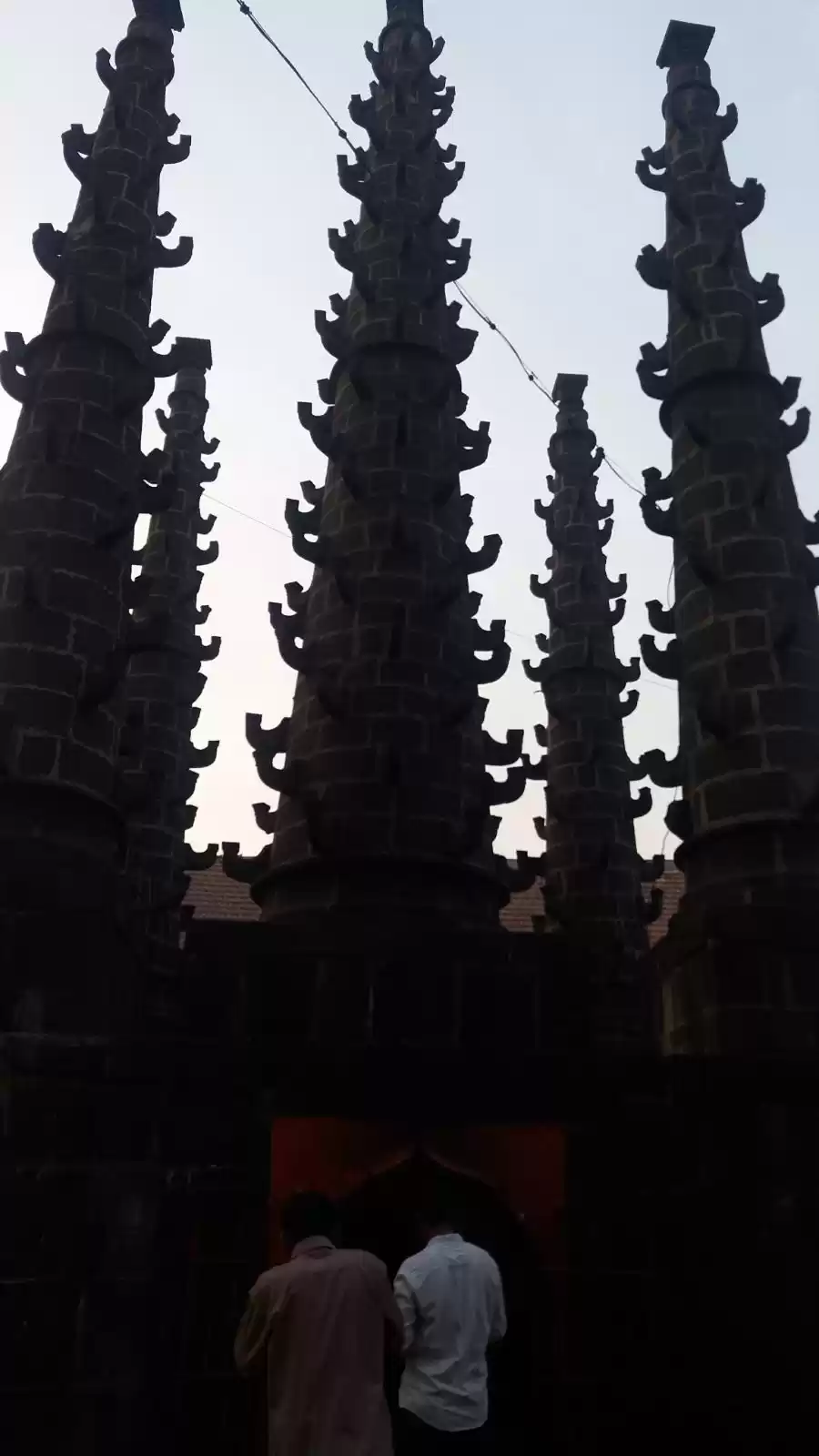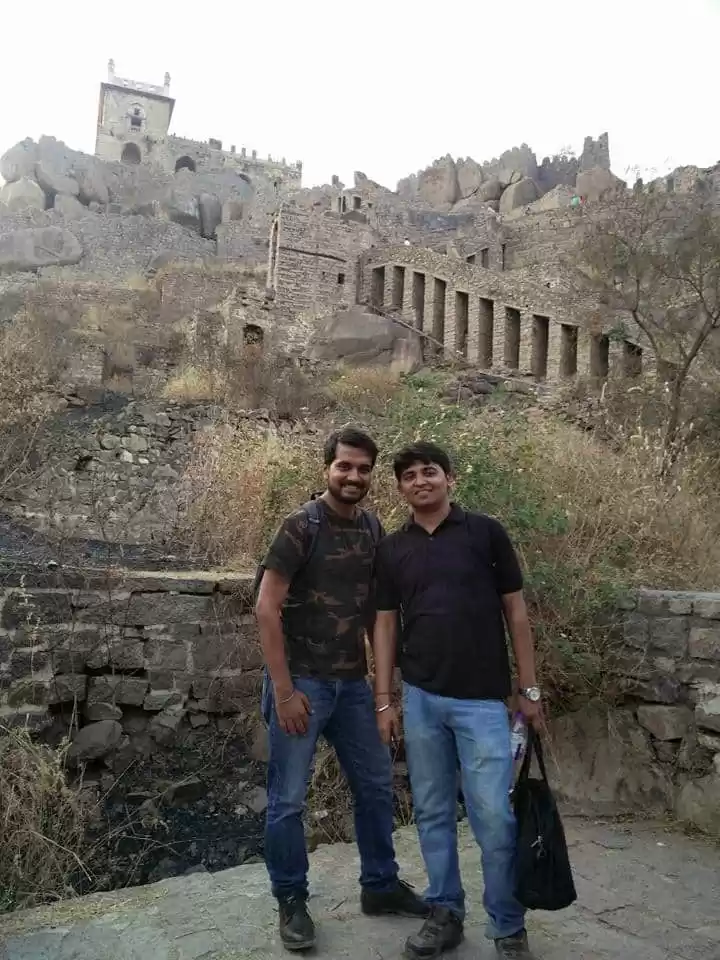Vishalgad Fort, also known as Khelna or Khilna, is a large and impressive fort in the Western Ghats of Maharashtra. It is located about 80 km from Kolhapur, and 60 km from Belgaum. The fort has a rich and glorious history, as it was associated with the Maratha empire and its founder, Chhatrapati Shivaji Maharaj. The fort also has a stunning architecture and many attractions, such as temples, palaces, tombs, and memorials.
Moreover, the fort is surrounded by scenic and serene places, such as caves, hill stations, dams, and forests. Vishalgad Fort is a perfect destination for history buffs, nature lovers, and adventure seekers. In this article, we will explore the history, architecture, attractions, and nearby places of Vishalgad Fort, and provide you with some useful tips and information to plan your visit.
History of Vishalgad Fort
The name Vishalgad means “large fort”, and it is aptly named, as the fort covers an area of about 1130 acres. The fort was built by the Shilahara dynasty in the 10th century, and later expanded by the Bahmani, Adil Shahi, and Maratha dynasties. The fort played a crucial role in the history of the Maratha empire, as it was the base and refuge of Shivaji, the founder and king of the Marathas. The fort witnessed some of the most heroic and memorable events in the Maratha history, such as:

- The siege and capture of the fort by Shivaji in 1659, after a fierce battle with the Adil Shahi forces. Shivaji renamed the fort as Vishalgad, and made it his headquarters.
- The escape of Shivaji from the fort in 1660, when he was surrounded by the Mughal army led by Mirza Raja Jai Singh. Shivaji, along with a few of his loyal followers, managed to break through the enemy lines and reach Raigad, his capital. However, this escape came at a heavy price, as one of his most trusted generals, Baji Prabhu Deshpande, and his men sacrificed their lives at the Pavan Khind pass, to hold off the Mughal pursuers and ensure Shivaji’s safety.
- The renovation and fortification of the fort by Sambhaji, Shivaji’s son and successor, in 1682. Sambhaji built a palace, a temple, and a tomb on the fort, and also added more bastions, watchtowers, and cannons.
- The surrender and recapture of the fort by the Marathas during the Third Anglo-Maratha War in 1818. The fort was initially defended by a Maratha garrison, but they surrendered to the British forces after a short siege. However, a few months later, the fort was recaptured by the Maratha rebels, led by Bapu Gokhale, who fought bravely against the British until his death.
- The history of Vishalgad Fort is a testament to the courage, loyalty, and patriotism of the Marathas, who fought for their freedom and dignity against the foreign invaders. The fort is a living museum of the Maratha culture and heritage, and a source of inspiration for generations to come.
Architecture and Attractions of Vishalgad Fort
The fort is situated on a hilltop, at an altitude of about 3500 feet above sea level. The fort has four gates, namely Ganesh Darwaja, Maha Darwaja, Pusati Darwaja, and Alai Darwaja. The fort also has three temples, dedicated to Lord Shiva, Goddess Parvati, and Lord Rama. The fort has many other attractions, such as:

The palace of Sambhaji, which is a two-storeyed structure, with a spacious hall, a courtyard, and a balcony. The palace offers a panoramic view of the surrounding hills and valleys.
The tomb of Baji Prabhu Deshpande, which is a simple and modest structure, built by Sambhaji in memory of his brave general, who laid down his life for Shivaji. The tomb is revered by the locals and visitors alike, who pay their respects to the martyr.
The memorial of Shivaji, which is a statue of the great king, mounted on a horse, with his sword raised in the air. The statue is located near the Pusati Darwaja, where Shivaji made his daring escape from the fort. The statue is a symbol of the valor and charisma of Shivaji, who is regarded as the father of the Maratha nation.
The water tanks, bastions, watchtowers, and cannons, which are the remnants of the fort’s defense system, and reflect the engineering and military skills of the Marathas. The fort has about 20 water tanks, which provide a steady supply of water throughout the year. The fort also has about 40 bastions, 10 watchtowers, and 20 cannons, which were used to guard and protect the fort from the enemies.
The architecture and attractions of Vishalgad Fort are a blend of beauty and functionality, and showcase the artistic and strategic genius of the Marathas. The fort is a treasure trove of historical and cultural artifacts, and a delight for the eyes and the mind.
Nearby Places and Activities around Vishalgad Fort
The fort is not only a historical and cultural attraction, but also a gateway to many nearby places and activities, that offer a variety of experiences and adventures. Some of the nearby places and activities are:

The Pandav Caves, which are a group of five rock-cut caves, located about 10 km from the fort. The caves are believed to have been the residence of the Pandavas, the heroes of the epic Mahabharata, during their exile. The caves are also known for their carvings, paintings, and sculptures, depicting scenes from Hindu mythology and history.

The Amboli Hill Station, which is a scenic and serene spot, located about 40 km from the fort. The hill station is famous for its waterfalls, forests, and biodiversity, and is a popular destination for nature lovers and photographers. The hill station also offers a cool and pleasant climate, and a refreshing escape from the heat and pollution of the city.

The Tilari Dam, which is a large and beautiful reservoir, located about 50 km from the fort. The dam is built on the Tilari river, and provides irrigation and hydroelectricity to the region. The dam also offers boating and fishing facilities, and a stunning view of the water and the mountains.

The trekking and camping options at the fort and its surroundings, which are ideal for adventure seekers and thrill seekers. The fort can be reached by a moderate to difficult trek, depending on the route and the season. The trek offers a challenging and rewarding experience, with scenic views and historical landmarks along the way. The fort also has a camping ground, where one can pitch a tent and spend a night under the stars, with a bonfire and a barbecue.
The nearby places and activities around Vishalgad Fort are a mix of nature and culture, and offer a range of options and opportunities for different types of travellers, such as families, solo travellers, couples, and groups. The fort is a hub of fun and excitement, and a place where one can create unforgettable memories.
Vishalgad Fort is a historical and cultural treasure of Maharashtra, that deserves to be visited and explored by everyone. The fort is a witness to the bravery and sacrifice of the Marathas, and a showcase of their architecture and art. The fort is also a gateway to many nearby places and activities, that offer a variety of experiences and adventures. Vishalgad Fort is a perfect destination for history buffs, nature lovers, and adventure seekers, and a place where one can learn, enjoy, and discover. If you are looking for a unique and enriching travel experience, then Vishalgad Fort is the place for you.
So, what are you waiting for? Book your tickets, pack your bags, and head to Vishalgad Fort, and experience the magic and mystery of this amazing fort. And don’t forget to share your feedback and stories with us on Tripoto, the world’s largest travel community.
Thank you for reading this article, and happy travelling!
















